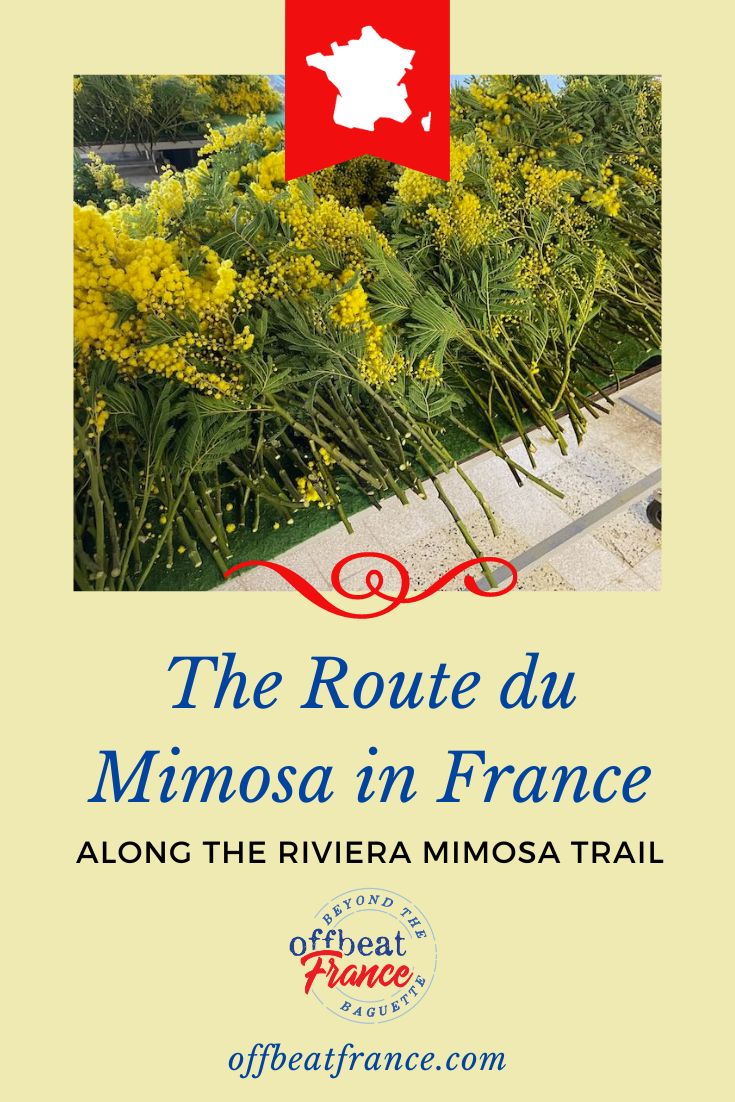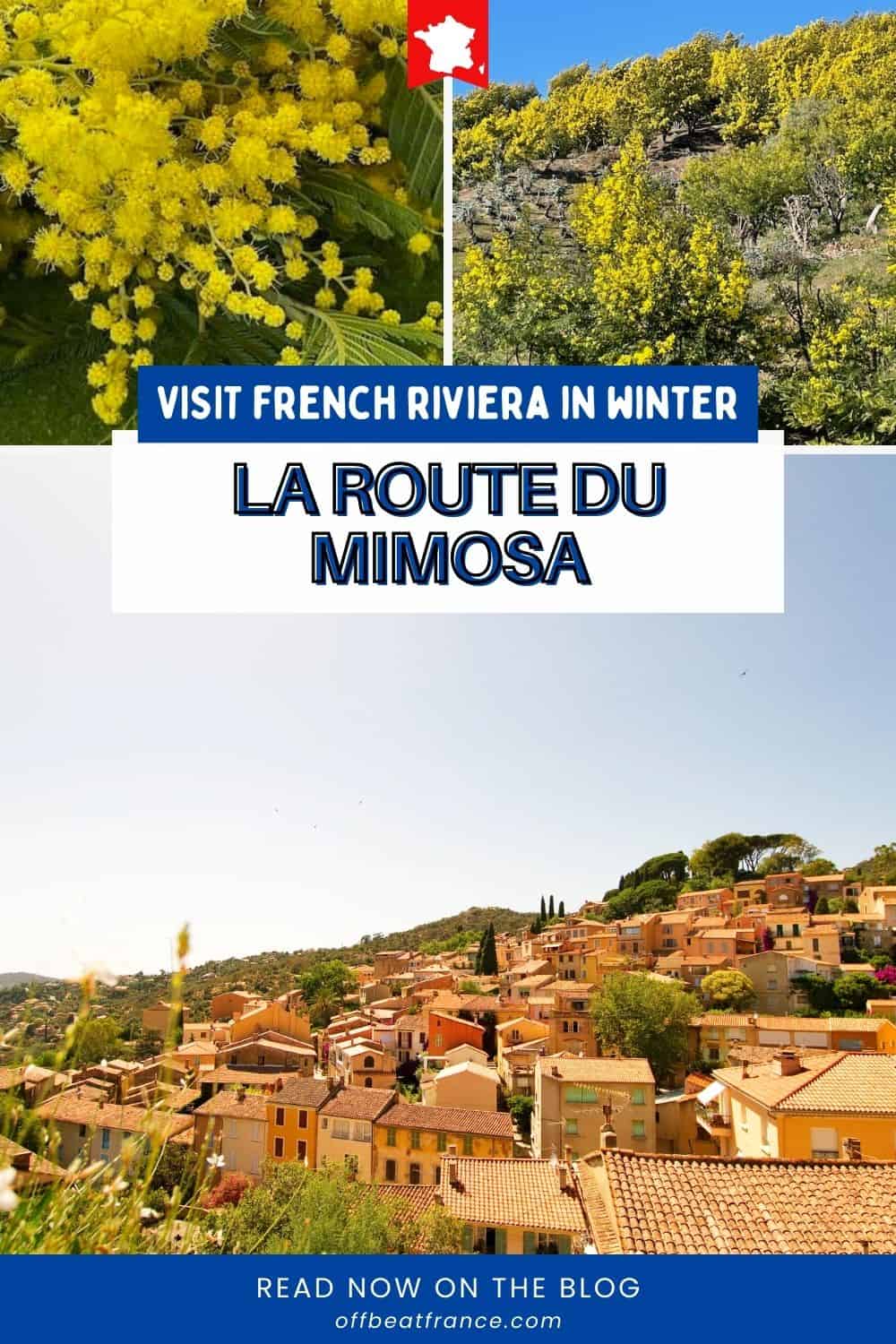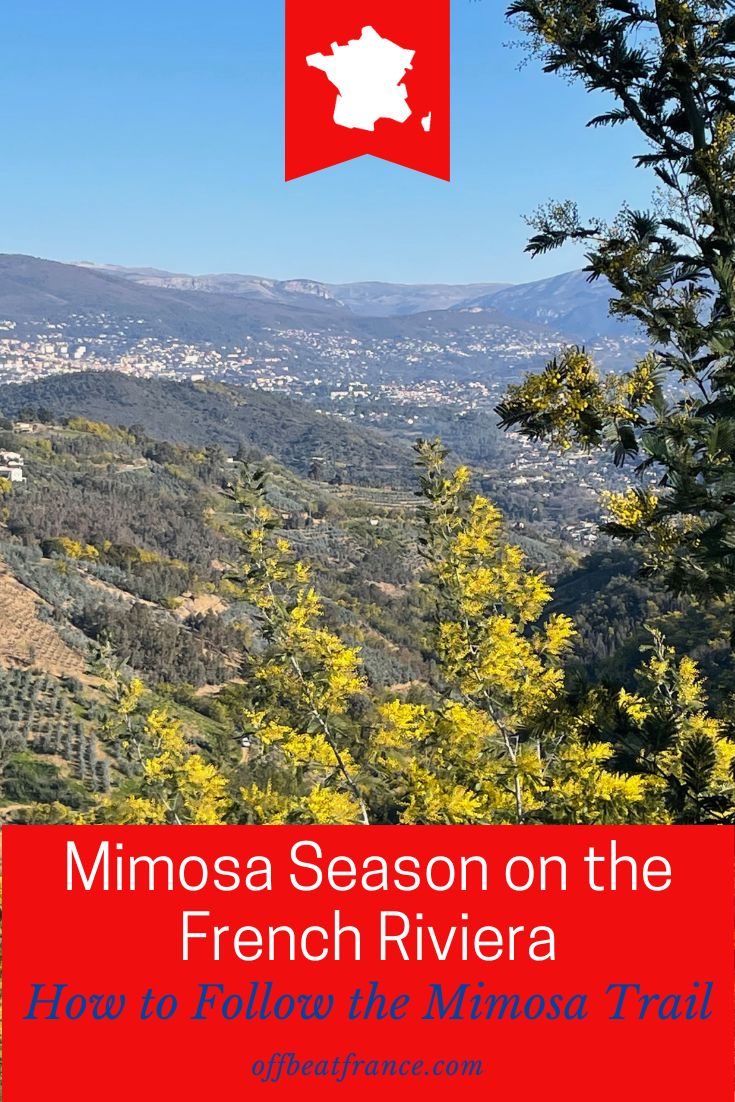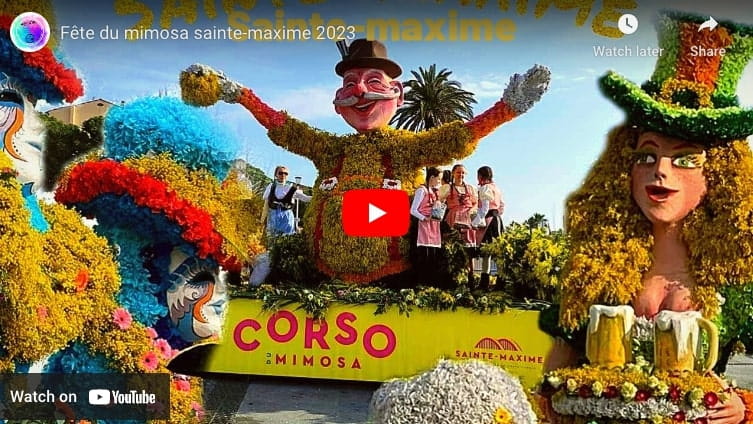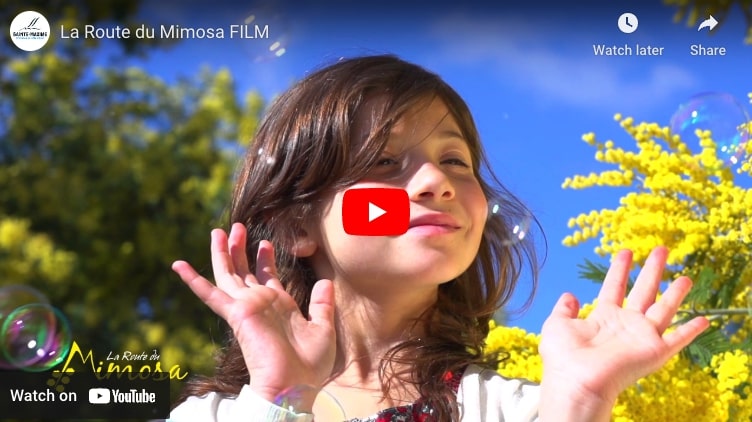Unsure about your French table manners? Click Here to download > > How to avoid these 10 food etiquette mistakes !
- Home ›
- Destinations ›
- Southern France ›
- Mimosa Trail
Chasing Mimosa in France: Best french Riviera Winter Road Trip
Updated 3 January 2025 by Leyla Alyanak — Parisian by birth, Lyonnaise by adoption, historian by passion
Follow me along the Route du Mimosa in France, a brilliant winter road trip along the French Riviera – eight stages over 130km (80mi) starting in Bormes-les-Mimosas in the Var and ending in Grasse in the Alpes Maritimes.
Each winter, the French Riviera bursts into oceans of golden bloom. Residents eye the burgeoning branches and at the first sign of the little yellow flowers, spirits lift, as though spring had arrived unexpectedly.
For those of us unable to call the French Riviera home, mimosa season is a welcome respite from the cold, gray winters further north, the bright sun and mild temperatures hinting at the seasons to come.
This is the perfect time to hit the road, winding our way along coastal towns and forests of mimosas, taking advantage of the sunny days of winter.
NOTE: Pages on this site may contain affiliate links, which support this site. See full Privacy Policy here.
If you love a good road trip (as I do), you can follow the Mimosa Trail (or La Route du Mimosa) over its 130km (80mi) crescent that stretches from Bormes-les-Mimosas in the Var right up to the perfume city of Grasse in southern France. You'll need a car to do this so if you don't have your own, make sure you reserve one well before this popular seasons starts, especially if you're hoping for an automatic, which are less easy to find.
Ideally, you'll spend several days along this route, exploring both the beautiful mimosas and the magical places along the way.
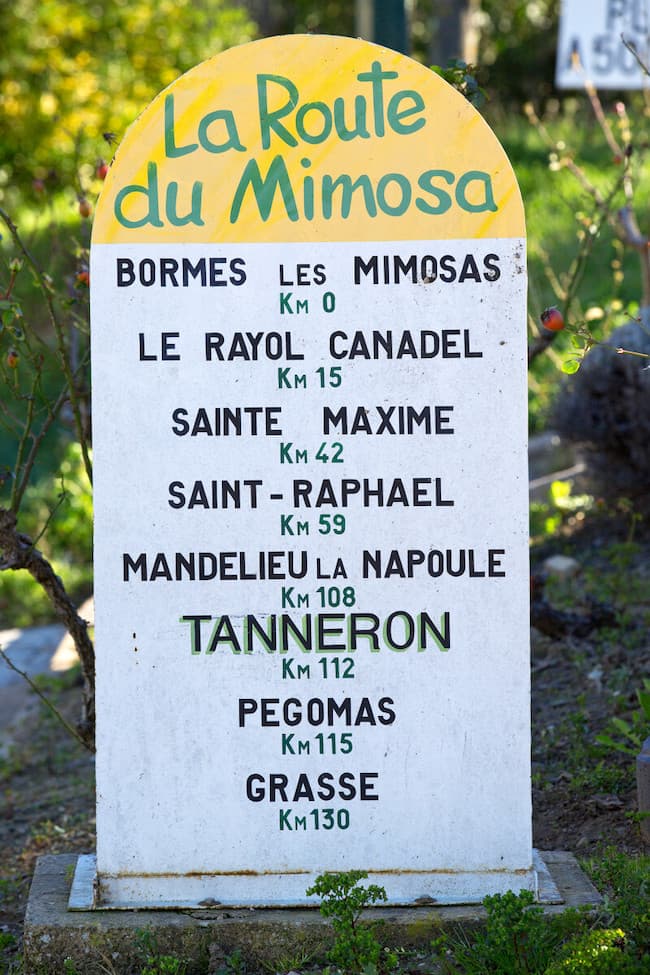 Stages along the Route du Mimosa ©C.Moirenc
Stages along the Route du Mimosa ©C.MoirencThe route du mimosa in France: my free itinerary (based on my own trip)
However long you decide to stay on this route, you'll be seeing the south of France at its winter best. Here are the various stops, and we'll go into detail about them below (10km = approx 6mi):
1. Bormes-les-Mimosas: Km 0
2. Rayol-Canadel-sur-Mer: Km 15
3. Sainte-Maxime: Km 42
4. Saint-Raphaël: Km 59
5. Mandelieu: Km 108
6. Tanneron: Km 112
7. Pégomas: Km 115
8. Grasse: Km 130
You may decide to whip through some of these steps, given the short distance between some of them, or stay a day or two. There are no rules: each is wildly different, so you can enjoy both the seaside and the mountainous interior on the same French Riviera road trip.
You decide!
Below I outline each stop along the route, with a resource box at the end of each with useful information like tourist office contacts or hotel reservations. Where they exist, I've linked to the English-language version of websites. Otherwise, I've provided the French versions.
Again, remember to reserve your rental car ahead of time – this is a popular season on the French Riviera.
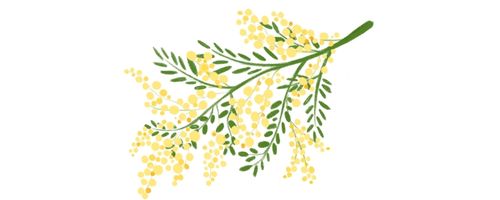
📕📕 TRAVEL GUIDEBOOKS TO THE RIVIERA
As I travel across France, I use guidebooks to remind me of the history of certain places and to uncover new sights I might not have heard of, guides like these:
☀️ Moon Provence & the French Riviera, the most recent
☀️ Rick Steves Provence & the French Riviera, a classic
☀️ Green Guide to the French Riviera, great for historical information

Bormes-les-Mimosas: Km 0
This 12th-century medieval village is your starting point, or Kilometer 0, and you'll see why as soon as you get here.
Looking at the graceful curve of the bay it inhabits, Bormes-les-Mimosas deserves its name – the village is filled with 90 mimosa varieties (and hundreds of rare plant species). In fact, it used to be called simply Bormes, but local authorities added "les-mimosas" in recognition of the village's huge number of mimosa trees.
While you're here to wander around the streets and check out the mimosa, there's a lot more to do in this little town.
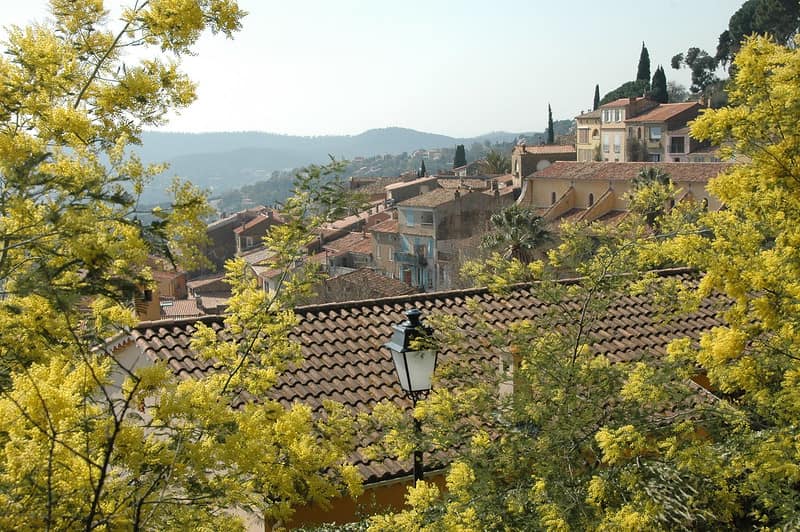 Bormes-les-Mimosas at the height of the winter season ©Bob Leckridge via Flickr CC BY-NC-ND 2.0
Bormes-les-Mimosas at the height of the winter season ©Bob Leckridge via Flickr CC BY-NC-ND 2.0Things to do in Bormes les Mimosas
- The first thing to do is explore the beautiful village itself, its narrow streets and peaceful squares.
- It's right on the Mediterranean Sea so you can of course enjoy one of its beaches (see the Resources box at the end of this section).
- If you love plants, head for the Parc Gonzales on your right as you climb the curvy road into Bormes. They have a great mimosa collection but also unique Australian plant species. There's no other place like it in Europe.
- A short drive from town is an amazing mimosa nursery run by Julien Cavatore and his family (the website is in French but several of the staff speak English). They're extremely welcoming and filled with tips on growing and caring for your mimosa. Since the mimosa flower doesn't last long, consider ordering yours online when you get home – they have 180 varieties on site and their garden has earned multiple labels of excellence.
- Discover the region's products on a 4X4 tasting safari to sample regional wines and culinary specialties – and you won't have to drive.
- Visit the nearby Fort de Brégançon, the summer residence of the French president. Some presidents used it often, some not at all. It was refurbished by General Charles de Gaulle, but he left power before he had a chance to enjoy it. Napoleon came through here, and left behind a few canon...
- If you happen to be here at the end of February, the Mimosa Festival is a yearly event that highlights this amazing flower. Some 12 tons of mimosa (80,000 flowers!) go into preparing the oldest mimosa parade on the Côte d'Azur.
ADDITIONAL RESOURCES FOR BORMES-LES-MIMOSAS
➽ Where to stay: If you're on a budget, the Hotel Paradis provides a delightful welcome from its new owners, who go above and beyond to try to help. Otherwise, booking.com has plenty of private accommodation in every price range.
➽ Recommended beaches: the small beach at Estagnol, with its white sand and tree shade; the larger Pellegrin, also sandy and shaded; Cabasson, for a stunning view over the Fort de Brégançon. (I know it's winter but the weather is often warm enough to catch the sun on the beach.)
➽ If you'd like to take the scent of the mimosa home with you, the Savonnerie des Bormes sells natural soaps and cosmetics scented with mimosa, of course, but not only.
➽ Contact the Tourist Office for more information about Bormes-les-Mimosas.

Rayol-Canadel-sur-Mer: Km 15
Part of the beauty of this second stretch of your road trip along the Mimosa Route is the actual road to Canadol, so green and flowered it is exactly what you imagine the Riviera to be.
During mimosa season, you'll see the extraordinary patches of gold almost wherever you turn in this village.
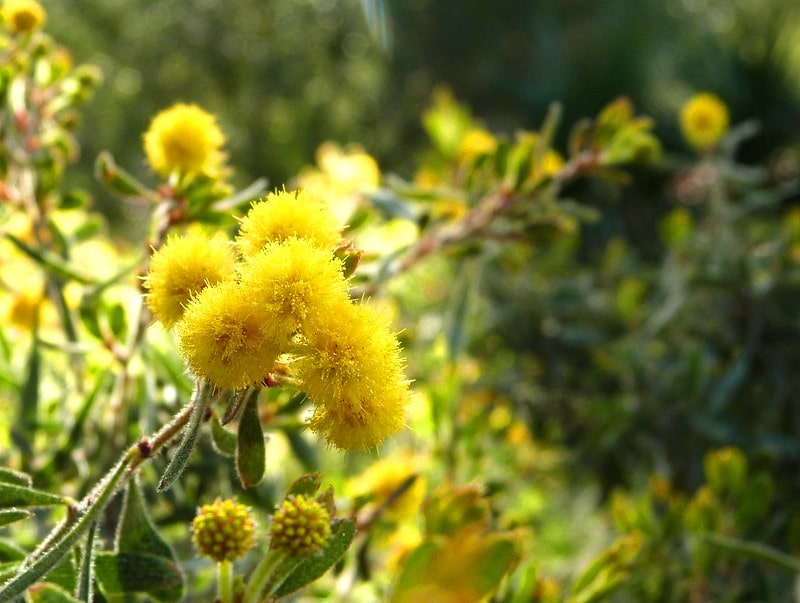 The Domaine de Rayol is the second stop along the Route du Mimosa, and has species from around the Mediterranean which borders it ©Domaine du Rayol via Flickr CC BY-NC-ND 2.0
The Domaine de Rayol is the second stop along the Route du Mimosa, and has species from around the Mediterranean which borders it ©Domaine du Rayol via Flickr CC BY-NC-ND 2.0Things to do in Rayol-Canadel-sur-Mer
- The one absolute must-see is the Domaine du Rayol park, a fabulous garden as beautiful in winter as it is in summer and listed as one of the "remarkable gardens" of France, one of the many top labels the country awards to places worth visiting. The Domaine has vegetation from Mediterranean-type climates around the world.
- If you cycle, Rayol is right on the coastal cycling route, known as the V65, which follows the old railway line.
- You'll need to be in shape, but you can climb the monumental staircase from the beach to a breathtaking view from the hills above. Conversely, you could walk down too... (Drop by the tourist office for a map.)
- If you take the stairs down to the beach, you can walk to the Domaine du Rayol. There is parking a short walk from the Domaine, but it's almost always full. And then there are the fabulous mimosas on view throughout!
- And if you make it all the way to the summit at the Col du Canadel, your view will be, well, extraordinary. I'll let you see for yourself.
ADDITIONAL RESOURCES FOR RAYOL-CANADEL-SUR-MER
➽ Where to stay: The best place for a splurge is the Hotel Le Bailli De Suffren, right in front of the sea. Otherwise, check out these other accommodation options at lower prices.
➽ Contact the Tourist Office for more information about Rayol-Canadel-sur-Mer.

Sainte-Maxime: Km 42
Sainte Maxime is a laid-back, friendly town along the coast, the opposite of the hyped-up Saint-Tropez and others like it. While many places are closed in winter on the Côte d'Azur, Sainte-Maxime is different and you won't have any problem finding a place to eat here.
Its long coastline makes this a true beach town, where you can combine the sun and sea with the small streets of the old town and its weekly markets.
Here's how it celebrates the mimosa in February!
Things to do in Sainte-Maxime
- The first weekend in February is when it happens: the Corso, or flowered parade in honor of the mimosa, one of many local festivals along the coast.
- Take in the local history at the Tour Carrée museum – not to mention the fabulous views.
- Of course there's a Miss Mimosa elected each year, and this happens right here in Sainte-Maxime.
- What I enjoyed about Sainte-Maxime was the simple pleasure of walking along the port, stopping once in a while to watch locals on a long lunch break playing pétanque. It feels lived-in, not made-for-tourists.
ADDITIONAL RESOURCES FOR SAINTE-MAXIME
➽ Where to stay: For the ultimate luxury spa stay, head for the Villa Cosy. Otherwise, booking.com has plenty of hotel and private accommodation in every price range.
➽ Where to eat: I had lunch at the Café de France, right across from the port, which has been serving since 1852. I particularly enjoyed browsing their collection of historical photographs. Good food in large portions.
➽ If you're keen to visit St Tropez, it's a short 15-minute ride by boat, which will save you the crowded drive and difficult parking
➽ Contact the Tourist Office for more information about Sainte-Maxime.

Saint-Raphaël: Km 59
As is the case for most of the stops along the Mimosa Route, a glance upward into the hills between January and March should yield blankets of golden mimosa flowering trees, in contrast with the dark rock of the mountain and a prelude to the increasingly flowered trail, all of which culminates in the Mimosa Festival in February.
Behind Saint-Raphaël is the Massif de L'esterel, or the Esterel mountain range, a gateway to the mimosa forests and some of the region's most unspoilt nature.
Across the water is the famous Ile d'Or, now a private island but believed to be the inspiration for the Tintin comic "L'Ile Noire", The Black Island, which regaled many a French childhood (mine included).
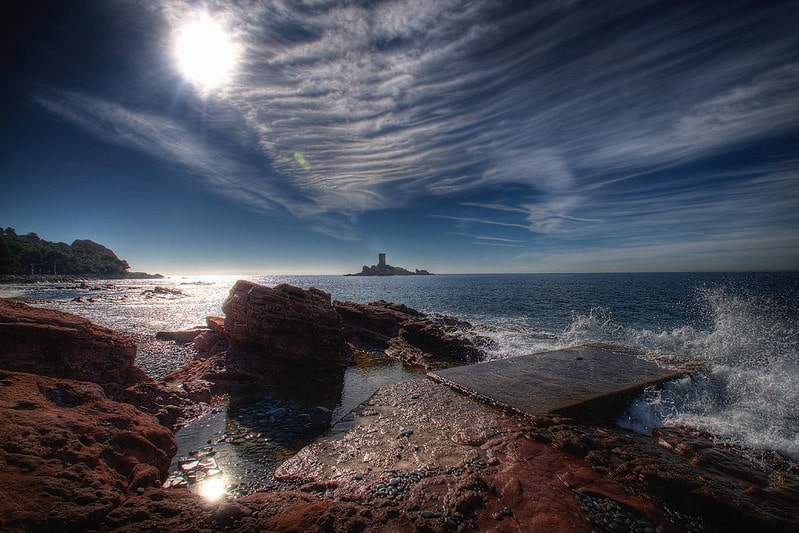 The famous Ile d'Or off the coast of Saint-Raphaël along the Route du Mimosa ©marcovdz via Flickr CC BY-NC-ND 2.0
The famous Ile d'Or off the coast of Saint-Raphaël along the Route du Mimosa ©marcovdz via Flickr CC BY-NC-ND 2.0Things to do in Saint-Raphaël
- If you've ever watched French comedy films, especially in the 20th century, you may be familiar with the "gendarme" series starring Louis de Funès, with St Tropez as a backdrop. He was so popular in France he has his own museum in Saint-Raphaël, so don't pass this one by if you're a fan (unless it's Monday, when it's closed). You'll find it right next to the train station. It's not far from St Tropez, where a separate museum showcases the "gendarmerie" and its links with the film industry and St Tropez. Both will contribute to your knowledge of this unexpected chapter in Riviera life.
- Stroll around the old town and visit the Romanesque San Raféu church. If you have the energy, climb its tower for one of those impossibly stunning views of the coast and the mountains. The church also contains an archaeological museum.
- If you like coastal paths and beaches, you're in the right place, with more than 30 beaches from which to choose. Saint-Raphaël is also a great starting point for hikes into the Massif de l’Estérel, in the interior.
- Push further afield with a 2.5-hour scenic boat tour of the volcanic coast and some welcome snorkeling at the height of summer.
ADDITIONAL RESOURCES FOR SAINT-RAPHAËL
➽ Where to stay: THE place to stay is Le Confidentiel, a small family-run hotel and spa with plush furniture and beautiful decor just a few minutes from town. Otherwise, there are plenty of other hotels or private accommodation has plenty of hotels or private accommodation you can choose from.
➽ Drop by the Palet d’Or chocolate shop to taste the Mimosa d’Agay, a delectable white chocolate mimosa-flavored creation. You'll find chocolatier Didier Carrié at 170, rue de l’Agay.
➽ Contact the Tourist Office for more information about Saint-Raphaël.

Mandelieu: Km 108
Mandelieu is known as the Capital of Mimosa, both for its sweeping mimosa views up the mountain and for the Parc Emmanuelle de Marande (she was a French writer with strong roots in the town), a mimosa arboretum, which is also known as the Museum of Mimosa, a green and golden wave in the Capitou neighborhood.
The Mandelieu tourist office organizes all sorts of mimosa tours, whether into the mountains above town on foot or by car (2CV even!) or to Emmanuelle de Marande park.
Of course Mandelieu has its own mimosa festival in February, with a Mimosa Queen election... and like other towns along the coast at the foot of l'Estérel, you'll have one foot in the azure Mediterranean and the other in the golden hills of the Massif du Tanneron forest above.
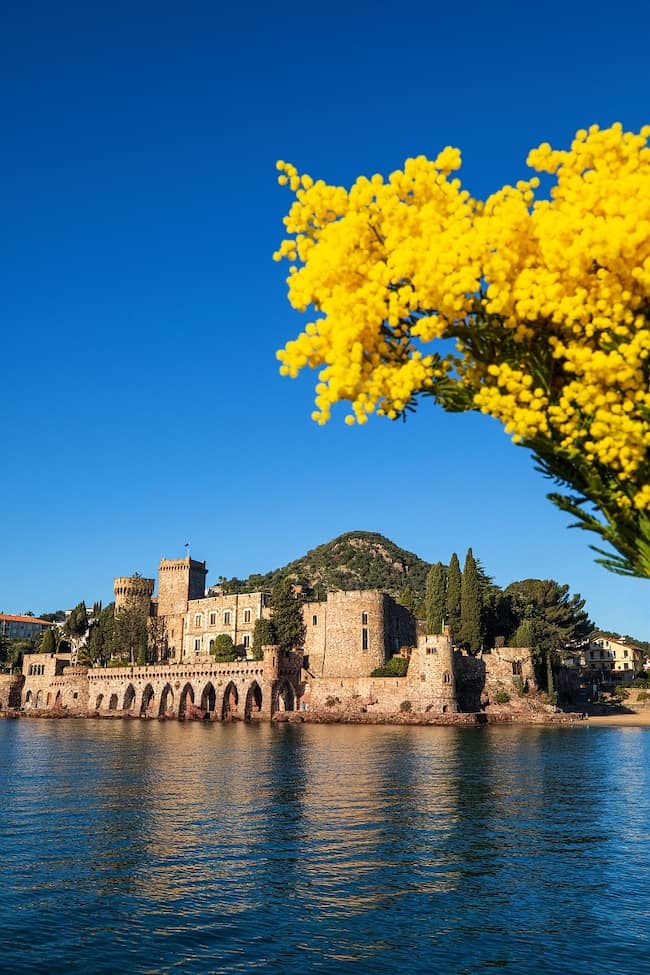 The Chateau de la Napoule in Mandelieu in mimosa season ©Camille Moirenc
The Chateau de la Napoule in Mandelieu in mimosa season ©Camille MoirencAt the tip of the bay you'll find the Château de la Napoule, a 14th-century fortress which owes much of its present-day state to a couple of American benefactors. Son of a Wall Street stockbroker, Henry Clews Jr was more or less disowned by his father for his artistic tendencies.
He moved to the French Riviera with his wife in the early 20th century and was a talented sculptor (he studied with Auguste Rodin), adding his own "artistic touches" to the castle – watch for them as you visit.
They bought the chateau and renovated the rooms and the gardens, turning the complex into the unique place we can see today.
Things to do in Mandelieu
- The fabulous Château de la Napoule, of course.
- The February Mimosa Festival.
- A stroll along the Siagne River is a delight, its shores bordered by trees of more than 50 different species and boats bobbing in the water along the shore.
ADDITIONAL RESOURCES FOR MANDELIEU
➽ Where to stay: The Ilot du Golf BW Premier Collection is a fabulous boutique hotel if you like the "modern chic" look. Otherwise, check out these private holiday listings and hotels.
➽ You're only half an hour by train from Cannes, if you'd like to hop over for the day and leave your car behind.
➽ Contact the Tourist Office for more information about Mandelieu and the various guided tours available.

Tanneron: Km 112
One of the nicest things about Tanneron is getting here from Mandelieu. You'll twist and turn along narrow mountain roads with sweeping views down all the way down to the sea. Absolutely stunning.
In winter, you simply cannot escape the mimosa, wherever you turn, hill after undulating hill.
This is it, France's mimosa heartland.
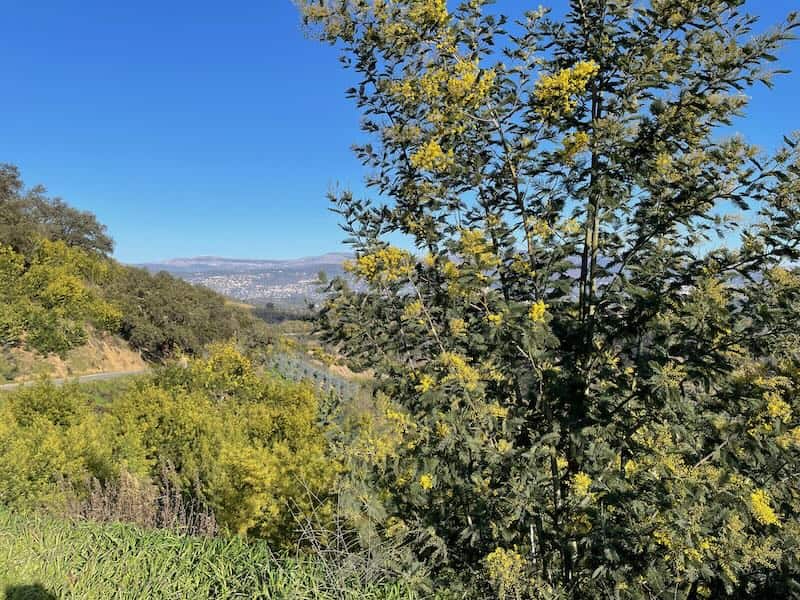 This is what the hills look like early in the season, before the gold blankets everything
This is what the hills look like early in the season, before the gold blankets everythingThings to do in Tanneron
- If you'd like to buy some mimosa, contact the tourist office (see box below) and ask if they can help organize a visit to a forcerie (click here to understand the role of a forcerie).
- The Tanneron is a forest made for hiking and is riddled with trails for every level.
- If you see a sign that says honey, or "miel", stop and buy some. Mimosa honey is different and delicious.
- Take a bit of time to walk around the small village of Tanneron, and for something a little different, push on to Lake Saint-Cassien, where you'll find a small 10th-century chapel.
ADDITIONAL RESOURCES FOR TANNERON
➽ Where to stay: Tanneron has a few private accommodations and hotels within driving distance, but you may have to go further afield, depending on the season.
➽ Please note that it is illegal to pick "wild" mimosa anywhere in the Tanneron Forest. Most of it isn't wild – it belongs to farmers whose crop is short-lived and who cannot afford thousands of people picking off their livelihood.
➽ Contact the Tourist Office for more information about Tanneron and the environs. If you'd like to visit a forcerie, there's every chance they can help.

Pégomas: Km 115
By the time you reach Pégomas, you will have been driving through mimosa forest for a while and getting close to the last section of the mimosa route. The entire region is a delight throughout winter, with extraordinary scenery and far fewer cars than you might expect.
By the time you get here, you'll be nearing the end of the Route d'Or, or Golden Route, from Mandelieu up through Tanneron and now Pégomas.
Still, I suggest you try to get to this area early and you'll have it all to yourself. Like Tanneron, this is the place for walks.
Pegomas is home to several "forceries", or hothouses, but like Tanneron, visits are becoming increasingly difficult, so I encourage you to contact the tourist office directly. If you look online, there are several forceries that appear to welcome guests but in reality, most do not, unless you have reserved ahead of time, which is why I suggest enlisting the help of the tourist office.
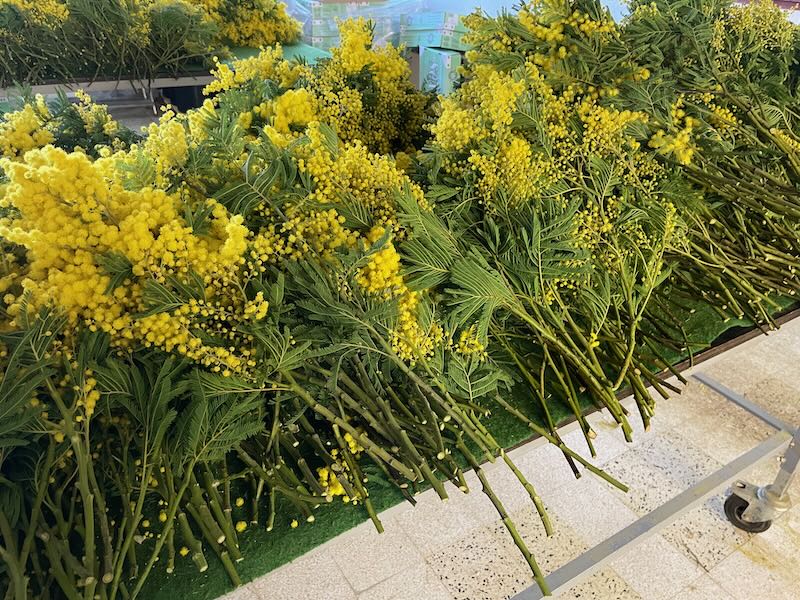 A forcerie is where the mimosa is matured and prepared for sale, usually in small bouquets like these
A forcerie is where the mimosa is matured and prepared for sale, usually in small bouquets like theseThings to do in Pégomas
- Visit a forcerie if you can organize it.
- If you happen to be here on a Thursday, you'll be in time for the authentic local food market, which is always fun and useful for a picnic in the forest (or for your dinner at your rental apartment).
- In town, drop by Saint-Pierre church, which has a few frescoes and paintings worth seeing.
ADDITIONAL RESOURCES FOR PÉGOMAS
➽ Where to stay: Pégomas has a larger hotel selection than Tanneron and since it's a 15-minute drive away, this might be a good base for your overnight in this area.
➽ Pégomas has a specialty: the "mimosette", a type of brioche (part cake, part bread) made here only during the mimosa festival. You'll find it at the Fournil du Logis, Place du Logis, in Pégomas.
➽ Contact the Tourist Office for more information about Pégomas (the tourist office and the town hall are one and the same). Write or drop by, or call +33 4 92 60 20 70 for information.

Grasse: Km 130
This is IT – congratulations, you've made it to the final stop of the Mimosa Trail! You have now reached the world capital of perfume, a fitting end to a trip that is all about flowers.
I expected Grasse to be a kind of tourist trap, with plenty of cheap perfume and tacky souvenirs of the "scent from Grasse" type.
Not at all! This is a lovely town (built on a steep hill, beware), full of medieval streets, tiny specialty shops, and delightful gardens. I visited for a day – and then drove right back the next day because I enjoyed it so much. It's no surprise that the perfume know-how of Grasse is protected on UNESCO's Intangible Cultural Heritage List.
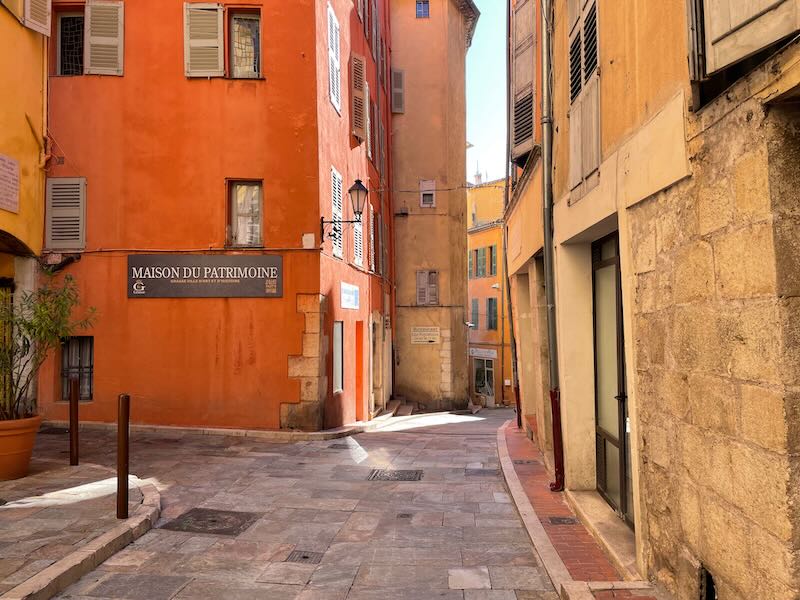
Things to do in Grasse
- One of the most popular activities in Grasse is to make your own perfume at one of the popular workshops.
3 TOP GRASSE PERFUME EXPERIENCES
➽ Perfume-Making Workshop
➽ Perfume-Making Class and Fragonard Factory Tour
➽ VIP Perfume Workshop
- The International Museum of Perfumery, or MIP, is absolutely worth the visit, as it traces not only the perfume production process but its history, from the earliest ages through to modern packaging. Although their regular guided tours are in French, you can phone them at +33 4 97 05 58 00 – they told me they do have English-language guides but they have to be reserved a few days ahead of time.
- Stop by one of the three major perfumers – Fragonard, Galimard or Molinard – for a free tour (most tours are in French).
- Visit Grasse's various gardens, which are open depending on the season (check with the tourist office), including a small garden which once belonged to Pauline, sister of Napoleon Bonaparte (she spent a winter in Grasse during an estrangement with her brother).
- Visit the Musée Fragonard – not the perfumers but the artist, Jean-Honoré Fragonard, who was born in Grasse.
- Buy a few original scents from one of the small, boutique perfumers in Grasse. I loved the light, natural florals elaborated by Jessica at her perfume shop in the old town, 1000 Flowers.
- Explore the cathedral (and its unique three works by Rubens!)
ADDITIONAL RESOURCES FOR GRASSE
➽ Where to stay: If you'd like to stay a bit outside town away from the hustle and bustle, I highly recommend Lou Messougo, a delightful holiday rental – we call it a gîte in France – about 15 minutes from either Grasse or the Mediterranean. Otherwise, Grasse has a good selection of hotels and private accommodation within Grasse.
➽ Where to eat: I had two excellent but very different lunches in Grasse. For earthy local cooking, head to Lou Pignatoun in the heart of the old town, where I had a very traditional aïoli with fish. For light and fresh natural fare, the little Café des Musées across the street from the MIP was lovely. However, it does get plenty of negative reviews so either things have now improved, or I was particularly fortunate. If you so decide to try it out, walk in and reserve your table before your museum visit. It fills up quickly.
➽ Contact the Tourist Office for more information about Grasse.
WHERE SHOULD YOU GO AFTER YOUR MIMOSA ROUTE ROAD TRIP?
🌸 Head north towards Provence!
🚗 Visit the stunning hilltop villages of the Luberon
The history of mimosa in France
Mimosa isn't endemic to France.
Initially from Australia, mimosa was introduced into Europe's botanical gardens after the major scientific expeditions of the 17th and 18th centuries. It would spread to southern France by British aristocrats who wanted to bring winter color to their gardens. The mimosa felt right at home in this climate and proliferated.
Today, it covers a wide swathe of territory along the coast and into the mountains above, and is one of the foundations of Grasse's perfume industry.
If you want to get more of a "feel" for the Mimosa Trail, this video by the tourist office should do the trick.
So what is a "forcerie", exactly?
It comes from the verb "to force", in this case a room in which the mimosa is "forced" to flower after being collected from the forest while it is still green, often around November and December.
After collecting the mimosa, mimosa producers (called "mimosistes") treat and store it in a room whose temperature ranges from 20-22℃ (68-71℉) with a humidity above 85%: this combination guarantees a perfect flower, "forcing" them to bloom in just one night.
After the mimosa blooms, a group of 6-8 women gather around a large table to clean it from excess branches and gather it into small bunches, which will then go on sale. In a good year, the Forcerie Augier can process up to 18 tons of mimosa!
You used to be able to visit several forceries in the Pays de Grasse but increasingly, they are closing the doors to visitors, often because they have too much work and not enough staff to stop and explain things.
Occasionally, a forcerie does accept to show people around, but the only way you'll find out which ones is by contacting the local tourist offices (I've given you the contacts above).
I was able to watch bouquets being prepared at the Forcerie Augier, but not enter the "forcing" room, which is kept at constant temperatures. Still, it was fascinating to see how it's all put together!
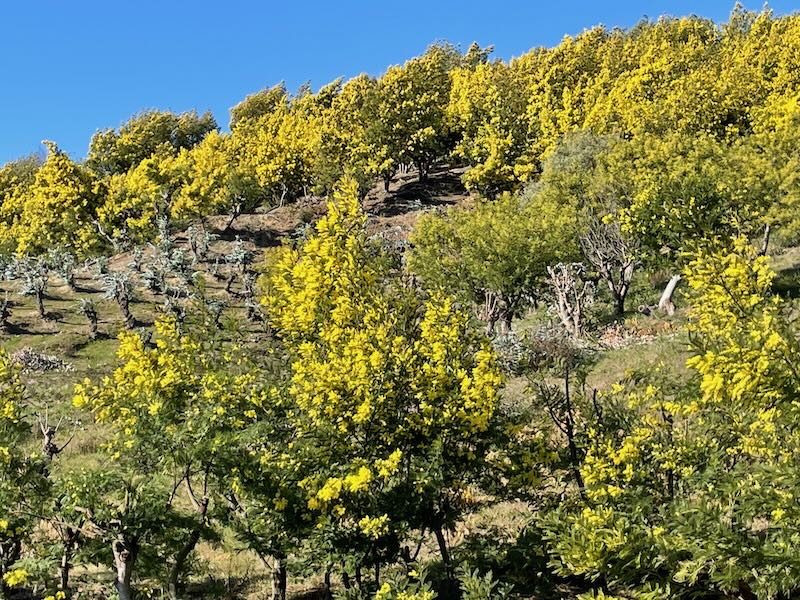
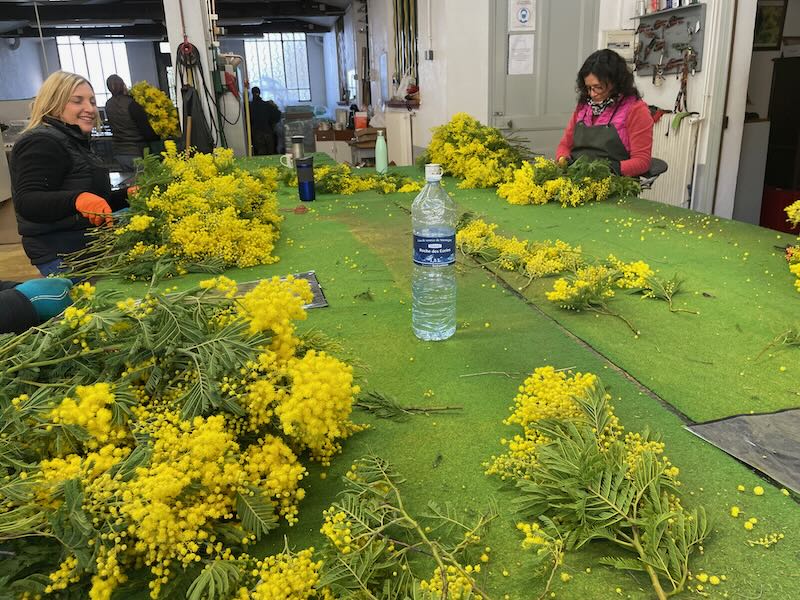
How to get to the Mimosa Trail
If you're flying into the region, the closest airport to the starting point of the Mimosa Route is Toulon-Hyères, which has some international flights during the high season. It's just over 20km from Bormes-les-Mimosas.
Your better bet is a flight to Marseille, just over 100km away, an hour-and-a-half's drive to the start of the route (some out of season too). It's a more cosmopolitan airport, with flights from across Europe and beyond, and plenty of car rental facilities. Find out about availability of cars from Marseille airport.
If you're landing in Paris, you can take the TGV from Charles de Gaulle airport directly to Marseille and rent your car upon arrival to begin your drive.
Best time to see the mimosa in France
The mimosa season is relatively short, lasting from late January to March. I visited for a week over the end of January and early February and it was perfect.
Try to time your trip to avoid the "vacances scolaires", the school holidays, when it is more crowded. That said, both the Nice Carnival and the Menton Lemon Festival take place during this period, so the crowds might be hard to avoid if you want to take in either of these.
Or, you can make this all a part of a larger road trip across southern France...
Did you enjoy this article? I'd love if you shared it!
